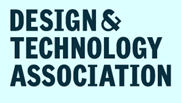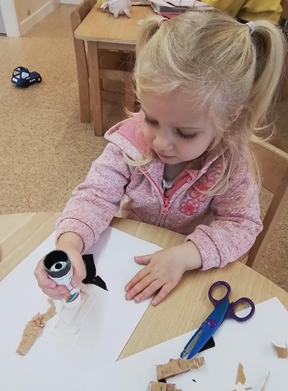Design and Technology Curriculum Statement
Intent
“Everything is design, everything!” - Paul Rand
“Creativity is inventing, experimenting, growing, taking risks, breaking rules, making mistakes and having fun.” - Mary Lou Cook
It is our intent for Design Technology at Clee Hill Community Academy to excite and inspire children to think creatively and imaginatively and to design and make products to solve real or relevant problems considering their purpose, function and the needs of the user.
Throughout their D&T journey, pupils acquire a broad range of subject
 knowledge and draw on disciplines such as mathematics, science, engineering, computing and art. Pupils learn how to take risks, becoming resourceful, innovative, enterprising and capable citizens. Through the evaluation of past and present design and technology, they develop a critical understanding of its impact on daily life and the wider world. High-quality design and technology education makes an essential contribution to the creativity, culture, wealth and well-being of the nation.
knowledge and draw on disciplines such as mathematics, science, engineering, computing and art. Pupils learn how to take risks, becoming resourceful, innovative, enterprising and capable citizens. Through the evaluation of past and present design and technology, they develop a critical understanding of its impact on daily life and the wider world. High-quality design and technology education makes an essential contribution to the creativity, culture, wealth and well-being of the nation.
The national curriculum for design and technology aims to ensure that all pupils:
- develop the creative, technical and practical expertise needed to perform everyday tasks confidently and to participate successfully in an increasingly technological world
- build and apply a repertoire of knowledge, understanding and skills in order to design and make high-quality prototypes and products for a wide range of users
- critique, evaluate and test their ideas and products and the work of others
- understand and apply the principles of nutrition and learn how to cook.
Design and Technology provides opportunities for pupils to develop their capabilities, combining their designing and making skills with knowledge and understanding in order to create quality products that have a purpose. It involves inventive thinking, investigating, planning, evaluating and using a wide range of materials in many different situations. It is essential to prepare pupils to participate in tomorrow’s rapidly changing technologies
Implementation
Our Design and Technology Curriculum is topic-based, allowing for cross-curricular links whilst still ensuring that essential D&T knowledge is the base of all lessons. Through a variety of creative and practical activities children will have fun exploring products, materials, equipment and techniques to develop knowledge, understanding, skills and technical expertise. This will enable them to engage in a process of design and making, creating a range of structures, mechanisms, textiles, electrical systems and food products with purpose and enthusiasm. 
At Clee Hill Community Academy, we use ‘Projects on a page’, by the Design and Technology Association as the core planning and progression of D&T across school. Teaching of D&T follows the design, make, evaluate cycle. Topics are rooted in relevant contexts, real or imaginary that stimulate interest and give opportunities to develop technical skills.
There are three stages of the DT Process:
- Investigative and Evaluative Activities (IEAs)- children learn from a range of existing products and find out about D&T in the wider world
- Focussed Tasks (FTs)- pupils are taught specific technical knowledge, designing skills, and making skills
- Design, Make and Evaluate Assignment (DM&EA)- children create functional products with users and purposes in mind

 A rolling programme ensures children explore structures/construction, mechanisms, electrical, food technology and textiles.
A rolling programme ensures children explore structures/construction, mechanisms, electrical, food technology and textiles.
Our Early Years Curriculum
As part of our EYFS curriculum, there are milestones which have been carefully constructed with an end goal, to reflect our own dynamics and environment to meet our children’s needs, whilst ensuring a stimulating, challenging and diverse curriculum. Although many aspects of the Early Years Curriculum develop a solid understanding for D&T in Year 1, 'A Confident Creator' is of particular importance to show the progression of learning through Nursery and Reception.
EYFS Curriculum milestones and goals
Curriculum unit organisation
|
Cycle A |
Class 2 |
Class 3 |
Class 4 |
Class 5 |
|
Autumn
|
Food – Preparing fruit and vegetables (Projects on a page) Fruit Smoothies Story – Oliver’s fruit |
Structures/Pulleys or pneumatics instead of pulleys (Projects on a page) Castles – bridges and draw bridges |
Shell Structures using CAD Christmas box/3D Christmas tree decoration |
Textiles: Combining different fabric shapes (Projects on a page) Viking purses Include the CAD from projects on a page. |
|
Spring
|
Structures - Free standing structures (Projects on a page) Making chairs Goldilocks and the Three Bears. |
Food – Healthy and varied diet (Projects on a page) Sandwiches and wraps -Combining ingredients |
Electrical Systems - Simple Programming and Control (link to Computing – Crumble) |
Frame structures – (Projects on a page) Animal hide/bird feeder |
|
Summer
|
Mechanisms - Wheels and axles (Projects on a page) |
Mechanical Structures – Pneumatics (Projects on a page) Designing and making an ocean creature |
Food – Healthy and varied diet Design and make own healthy picnic for beach visit. |
Food: Celebrating culture and seasonality (Projects on a page) homemade pasta and homemade sauces |
|
Cycle B |
Class 2 |
Class 3 |
Class 4 |
Class 5 |
|
Autumn |
Food - Preparing fruit and vegetables (Projects on a page) Vegetable soup Vegetables for dips Oliver’s vegetables |
Textiles- 2D shape to 3D product (Projects on a page) Sewing Animals
|
Textiles- 2D shape to 3D product Re-using an item of clothing to make Christmas decoration. |
Food – celebrating culture and seasonality (Projects on a page) Greek food – flat breads, tzatziki, Greek salad |
|
Spring |
Textiles – Templates and joining (Projects on a page) Making bags Little Red Riding Hood |
Levers and Linkages –(Projects on a page) Make a Shaduf. |
Electrical Systems: Simple circuits and switches Design and make an alarm (light or buzzer) to protect the World Cup |
Mechanisms CAMs – (Projects on a page) Victorian toys. |
|
Summer |
Mechanisms – sliders and levers (Projects on a page) Moving flames for The Great Fire of London scene. Moving parts on a plant/Moving basket in the story The Lighthouse Keeper’s lunch |
Food – Healthy and varied diet (Projects on a page) Combining ingredients - East African chapati |
Food: Celebrating culture and seasonality/ Healthy and varied diet Food preparation skills including health and safety WW2 healthy meal using food rations |
Pulleys and gears – moving toy (Projects on a page) Mechanisms, computer control – Fairgrounds
|
Impact
- Children will develop creative, technical and practical expertise to confidently complete everyday tasks and take part in our increasingly technological world.
- They will build and apply a toolkit of skills, develop knowledge and understanding in order to make high quality prototypes and products for a range of users and test and evaluate their ideas and products and those of others.
- They will understand and apply the principles of nutrition and learn how to cook.
- Children will learn how to take risks becoming resourceful, innovative, enterprising. Through evaluation of past and present design technology they will develop a critical understanding of its impact on daily life. High quality design and technology education makes an essential contribution to the creativity, culture, wealth and well-being of the nation.

